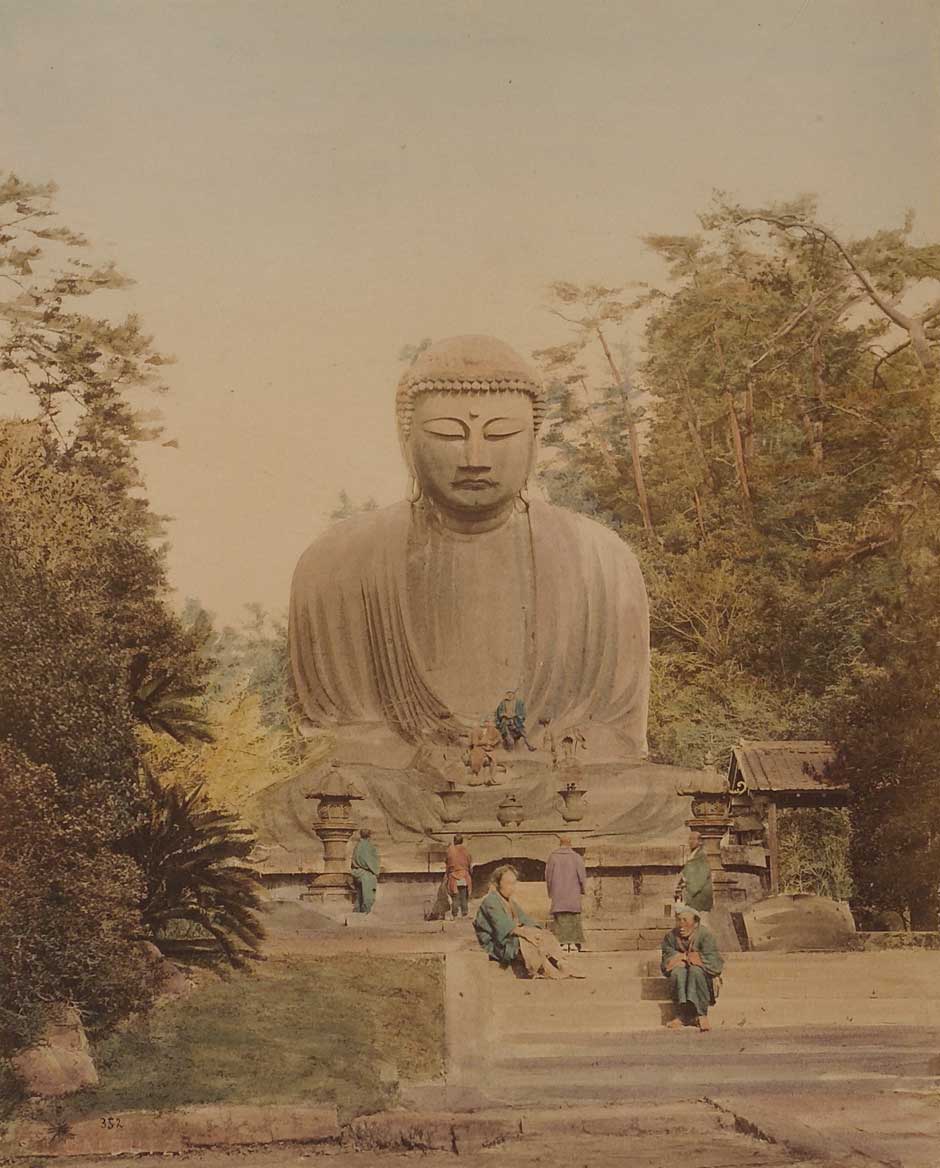The image above is subject to copyright.
Copyrights for Photographic Reproduction
Les feuillets numérisés des registres d'inventaires historiques sont soumise à un copyright.
Droits de reproduction photographique
 Inventaire original MEG. Registres tapuscrits, volumes 19 à 59
Inventaire original MEG. Registres tapuscrits, volumes 19 à 59
Registres_tapuscrits/39402.pdf
Buddhism passed from China to Japan in the 6th century. There it was particularly influenced by its esoteric form (Tantrism). This form uses rituals to a large number of beings who incarnate various degrees of enlightenment: buddhas, bodhisattvas, gods and goddesses, “kings of science” and others. Tantric Buddhism is represented by the Shingon and Tendai schools. They specialised in iconography in order to codify the colours, postures and gestures of the various personages used not only in the rituals but as an aid to meditation.

The great Amida (Daibutsu) Buddha of Kamakura, Views and Customs of Japan, by Stillfried & Andersen, Yokohama, around 1870. Alfred Bertrand collection © MEG Inv. ETHPH 411954
© 2021 Musée d'ethnographie, Genève